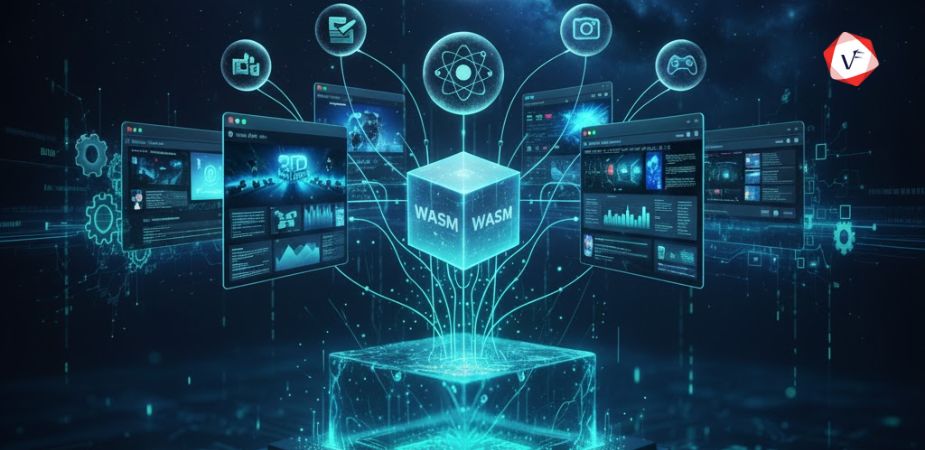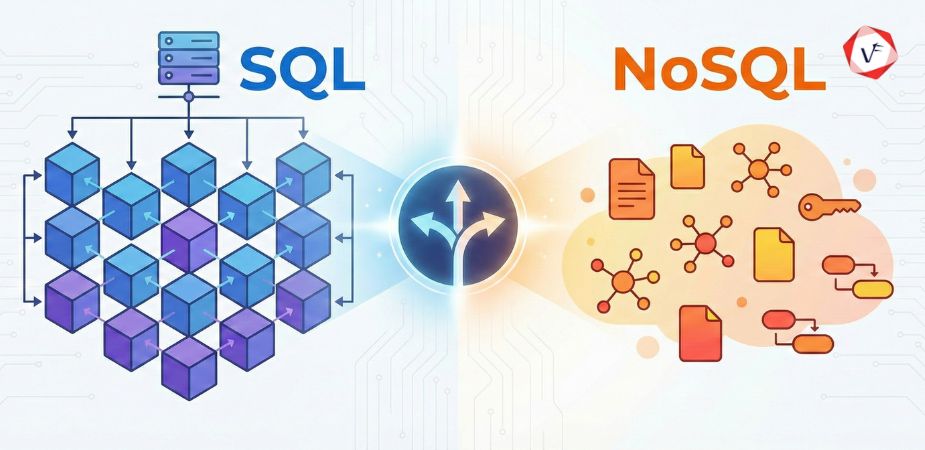- July 13, 2023 6:01 am
- by Sooraj
- July 13, 2023 6:01 am
- by Sooraj

The rise of artificial intelligence (AI) and machine learning has revolutionized how applications are developed, changing what's possible in the field of software development. The combination of these technologies enables developers to create software that is both smarter and more effective. This blog addresses the effects of AI and machine learning on software development, offering light on how these tools transform the field of development and developers' jobs.
Machine learning means the technologies and algorithms which allow systems to recognize patterns, make actions, and enhance one another through expertise and data, whereas artificial intelligence refers to the overall capacity that machines possess that imitate mental processes as they carry out tasks in real-world environments.
The effectiveness of software development jobs is proven to be improved by AI technologies. These innovations are being adopted by developers since they are aware of their advantages. These technologies play a crucial role in training upcoming programmers and assisting programmers in finding and fixing flaws in their code. These innovations also give developers access to smart coding platforms, cloud-based IDEs, and deployment control efficiency.
The applications of AI and ML in software development services are essentially endless, and they will only become more and more possible as these technologies evolve. The following are a few of the methods that businesses most frequently employ these technologies:
Data analysis: By examining huge amounts of organized or unorganized info, engineers can derive insightful information from their current systems or identify areas for advancement in various divisions, including marketing, customer service, finance, and others.
Automation of operations: By automating some operations, resources that would have previously been utilized on tiresome repetitive tasks, such as form filling, are released, giving developers more time for innovative ideas and creative endeavors.
User Experience Enhancement: Using machine learning algorithms like natural language processing (NLP) enables businesses to comprehend how clients feel through comprehending what they type into search bars; this assists in developing an improved client experience since clients frequently type searches or questions about products or services they're interested in but don't know precisely how to term it when looking online stores or websites.
Security: While there may be numerous factors involved in some cases, making it challenging for humans alone to identify irregularities precisely within an appropriate timespan without taking conveniences, developed security systems operated by AI can identify skeptical behavior patterns more quickly than ever before, including those that include malware attacks or unauthorized transactions.
Real-Time Insights: By utilizing real-time stream APIs from services used by your app, such as social media networks, developers can advertise offers/special deals more rapidly based on the client trends; this not only guarantees maximum ROI but also provides more benefit for your clients as they get an advantage over savings.Improved customer/end-user insights were created using ML.
Large Language Models (LLMs): Large Language Models (LLMs) allow for the entry of requirements as plain text and the output of code snippets. Developers no longer need to spend hours searching the internet for solutions to inquiries that can now be found in a matter of seconds. The efficiency of developers is increased by tools like these and those included in IDEs like Copilot-X.
Intrusion detection systems: Cybersecurity is being enhanced by intrusion detection systems that automatically detect threats and report them.
Chatbots: Presenting chances to develop innovative and fascinating applications, such as chatbots that can genuinely comprehend the end user.
AI-managed code compilers: The software code is translated into machine language by software developers using AI-managed code compilers.
AI-based programming assistants: Developers can create code more quickly and precisely with the aid of AI-based programming assistant.
AI-powered testing tools: Without human aid, AI-powered automated testing identifies flaws and produces reports.
Now let's examine in detail about AI-managed code compilers, AI-based programming assistants, and AI-powered testing tools in detail.
The software code is translated into machine language by software developers using AI-managed code compilers. We can leverage excellent ML frameworks like Glow or Compiler.ai, which serve as a backend for creating code and optimization of neural network configurations.
These AI technologies employ machine learning to accelerate code compilation and enhance its quality. We could see some amazing characteristics and features from these AI-managed compilers in the years to come even though they are still in the development stage.
Software testers and developers are becoming more efficient and productive due to AI and ML-powered tools that enable them to create software solutions of the highest caliber. In addition to assisting businesses in the development of software, AI and ML additionally help them evaluate their code, ensure it is secure, and come up with key choices. IT executives must choose AI-powered tools and solutions to improve their software development process while remaining mindful of all of these considerations.
Examples : Glow , Compiler.ai
We'll examine each phase of the AI compiler in more detail below.
The initial objective of the AI compiler is to divide a single input into smaller portions or jobs. It is necessary to approach each data segment individually. This presents a special challenge and unavoidably marks the point at which the assembly line paradigm and reality part ways.
The AI compiler provides each of the separate tasks to the gateway once we have separated the input data into jobs. Over a collection of labeling sources, the router is located. A combination of humans and technology, including AI and software tools like Snorkel, make up labelers. From this, the router determines which labeling sources are best suited to handle the task and delivers it to them for labeling in accordance with the needs of the project. The router has the option to use a combination of human and machine labor, as well as both, for a single task.
The combiner generates an importance-weighted blend of the labeling sources as the final output when all the labeling sources have finished a task. One of the system's more complicated components is this. It employs a machine learning algorithm to dynamically decide which output is the most precise by figuring out, for example, how many unskilled labelers are required to outperform one expert labeler.
The combiner outputs are used as data to train for machine learning models by the trainer module, which acts as a meta AI. When a model achieves a particular standard of excellence, the trainer puts it in the labeling sources database so that the router specified in step 2 can use it. The models created by the meta AI get better as more data is labeled inside a project, increasing the router's ability to count increasingly on them as a labeling source.
The AI compiler provides parameters that can be trained for each subsystem. To modify these parameters, AI employs reinforcement learning, more precisely an incompletely observable Markov decision process. This allows us to provide products that are of higher quality while also being quicker, less expensive, and more adaptable.
Software engineers frequently use these technologies because they can help with code compilation, code debugging, and code-driven testing. Programmers may write code in nearly any programming language using tools like Kite and Codota, two instances of AI-based programming assistants.
These computing helpers are able to use libraries, finish incomplete code, and correct syntax. These tools were created and trained using machine learning techniques that allow for less typing and more performance when writing codes.
Examples of AI-based programming assistants : Kite or Codota
Software testing can be streamlined, accelerated, and take up less time through the use of AI. Because artificial intelligence can never make an error and maintain focus while processing a lot of data, it improves the precision and efficacy of software testing.
Automated testing with AI without human assistance finds bugs and generates reports. Worldwide, businesses are utilizing AI to collect data and machine learning to separate odd from normal behavior. AI systems can be used to perform pattern recognition, find malware before it reaches the system, and identify malware for cybersecurity.
Examples of AI-powered testing tools : Testim.io or ReTest
As we have discovered, artificial intelligence (AI) and machine learning (ML) are extremely potent tools when integrated into software applications and facilities. Once adequately trained, all while lowering the risks related to errors made by humans when performing routine tasks frequently over extended periods of time. The importance of this technology is growing every day, so it's crucial that you get the most out of it as soon as possible.
There are potential challenges with this including that Existing tools are unable to gain knowledge from experience and must be frequently updated in order to keep up with the latest developments. This method uses a lot of resources. As current tools are prone to error care should be taken while using their output in a production context. Also Only very large firms can now afford to develop most AI technologies since they demand extremely high development and testing costs. Data used to train these programmes raises privacy and ethical problems and finally the potential loss of jobs.
Therefore, With caution assess your current systems and make plans in accordance with the results so that you can stay affordable and provide customers with more valuable ideas while optimizing return on investment (ROI).
Searching for a top software development company in India? Vofox Solutions delivers high-quality, custom software solutions tailored to your needs. Contact us today to get started.Guaranteed Response within One Business Day!

What are WebAssembly (WASM) Applications?
Code Review Best Practices: Complete Guide for 2026

Database Selection Guide: SQL vs NoSQL
AI Agents in Enterprise Software: How Autonomous AI is Transforming Business Operations
Manufacturing 4.0: AI and IoT Transforming Production Lines